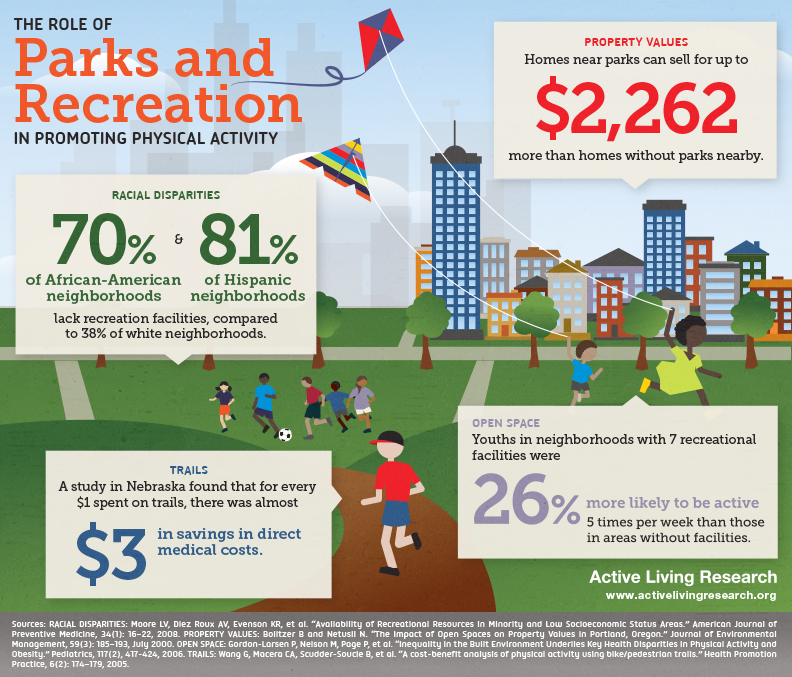Prioritizing Urban and Community Parks Can Boost Health and Social Equity

Inherent in the concept of local public parks is the idea that all members of a community — regardless of age, race, ethnicity, gender, ability level, or socioeconomic status — have access to a safe place to gather, play, exercise, and enjoy being outdoors.
Parks provide a wide array of benefits to the communities they serve, including improved health, economic development, and an overall elevated quality of life. Ensuring that communities have adequate access to public parks is a critical component of promoting social equity in the United States.
Public community parks promote equity and well-being within a community by providing the same benefits to all who use, live, or work near them. Numerous studies have shown that living close to a park is strongly correlated with higher rates of physical activity in both adults and children, lower rates of obesity, increased levels of economic development, and improved mental health and well-being.
Expanding Access to Public Parks
Unfortunately, low-income and minority communities often lack adequate access to public parks and recreational facilities, meaning their residents often miss out on the benefits they provide. A University of California, San Diego, study in the Los Angeles region found that 70 percent of African-American neighborhoods and 81 percent of Hispanic neighborhoods lacked recreational facilities compared with 38 percent of white neighborhoods.
Because inadequate access to parks contributes to inequitable health and economic development outcomes, a key tenet of promoting social equity must include expanding the distribution of and access to public parks and recreational spaces in underserved areas.

Source: http://activelivingresearch.org/blog/2012/10/infographic-role-parks-and-recreation-promoting-physical-activity
From a federal policy perspective, Congress can play an integral role in cutting down the disparity in park and recreational access around the country.
The Outdoor Recreation Legacy Partnership (ORLP) program is one example of a federal grant that provides funds to cities for urban and community park development. Funded through the Land and Water Conservation Fund's (LWCF) State Assistance program, the ORLP selection process specifically prioritizes economically disadvantaged and underserved communities.
A Call for Greater Equity in Park and Recreational Development
The Urban Park and Recreation Recovery Program (UPARR) — unfortunately unfunded since 2002 — was a federal program designed to provide direct matching grants and technical assistance to economically distressed urban communities to develop community parks and recreational facilities.
ORLP, created in the congressional appropriations process for Fiscal Year 2014, did see a substantial increase in funding last year when it quadrupled from $3 million in FY15 to $12 million in FY16. This increase demonstrated substantial bipartisan support in Congress. That said, $12 million a year is not nearly sufficient to fulfill the unmet need for park planning and development in underserved neighborhoods. Furthermore, budget concerns in Congress make future ORLP appropriation levels uncertain; they could foreseeably fall below $12 million in FY17 and beyond. Because the ORLP has not been formally authorized, the program could just as easily go unfunded in any future year.
Planners must work with policymakers to ensure they prioritize greater equity in park and recreational development, through providing robust funding for the ORLP program, reviving and updating UPARR, and exploring new and innovative ways of supporting increased park and recreation access.
Top image: Unique performance areas and retractable stages allow Campus Martius to host more than 200 events each year, including concerts and festivals. Photo courtesy Detroit 300 Conservancy.


